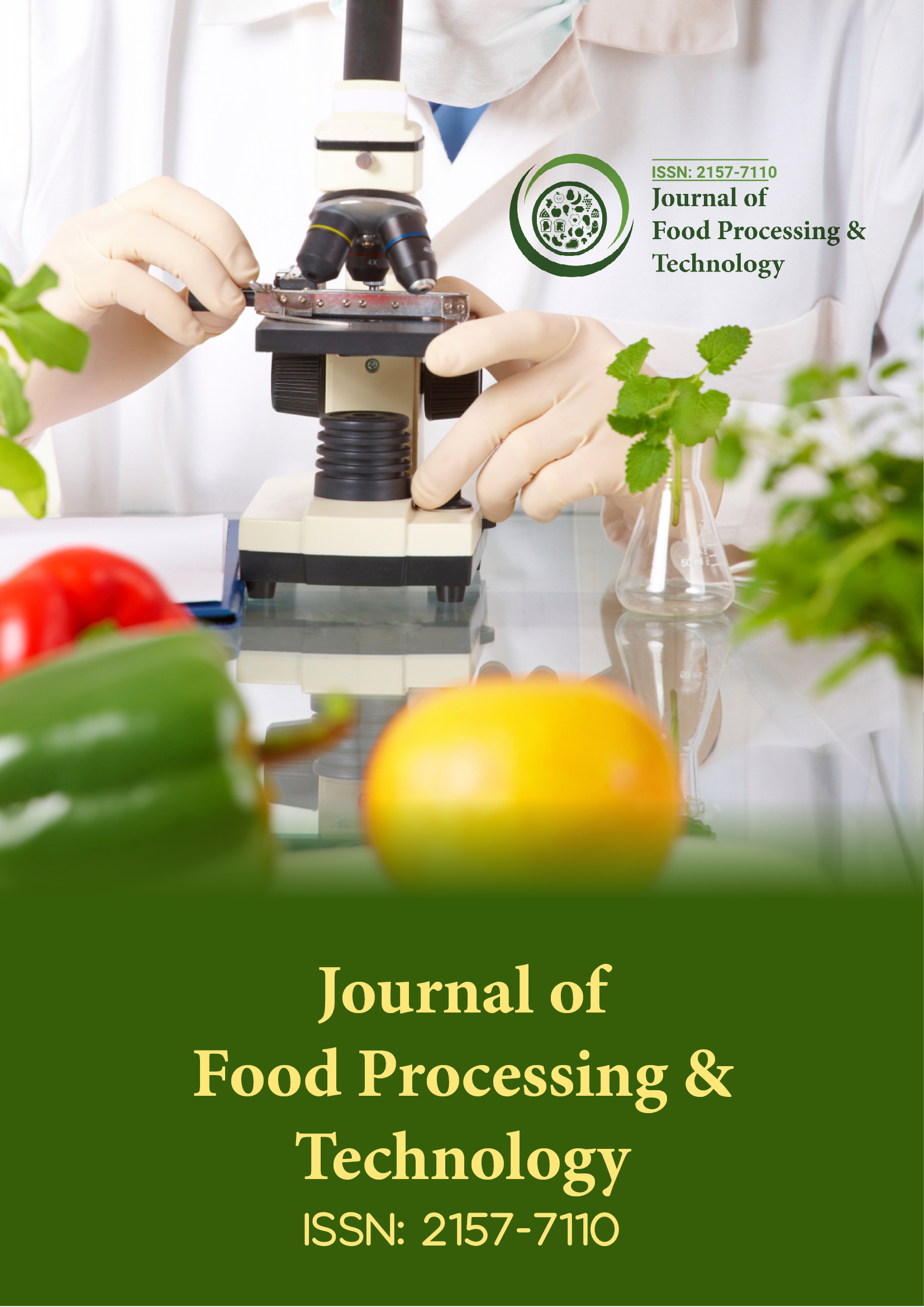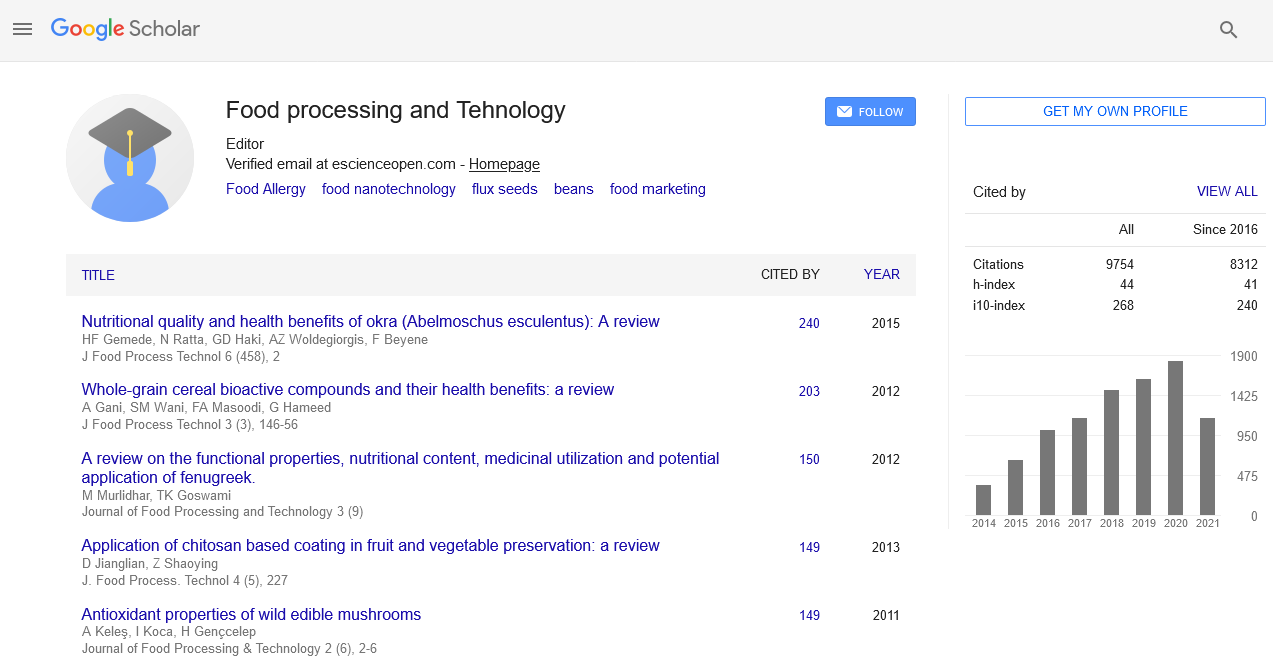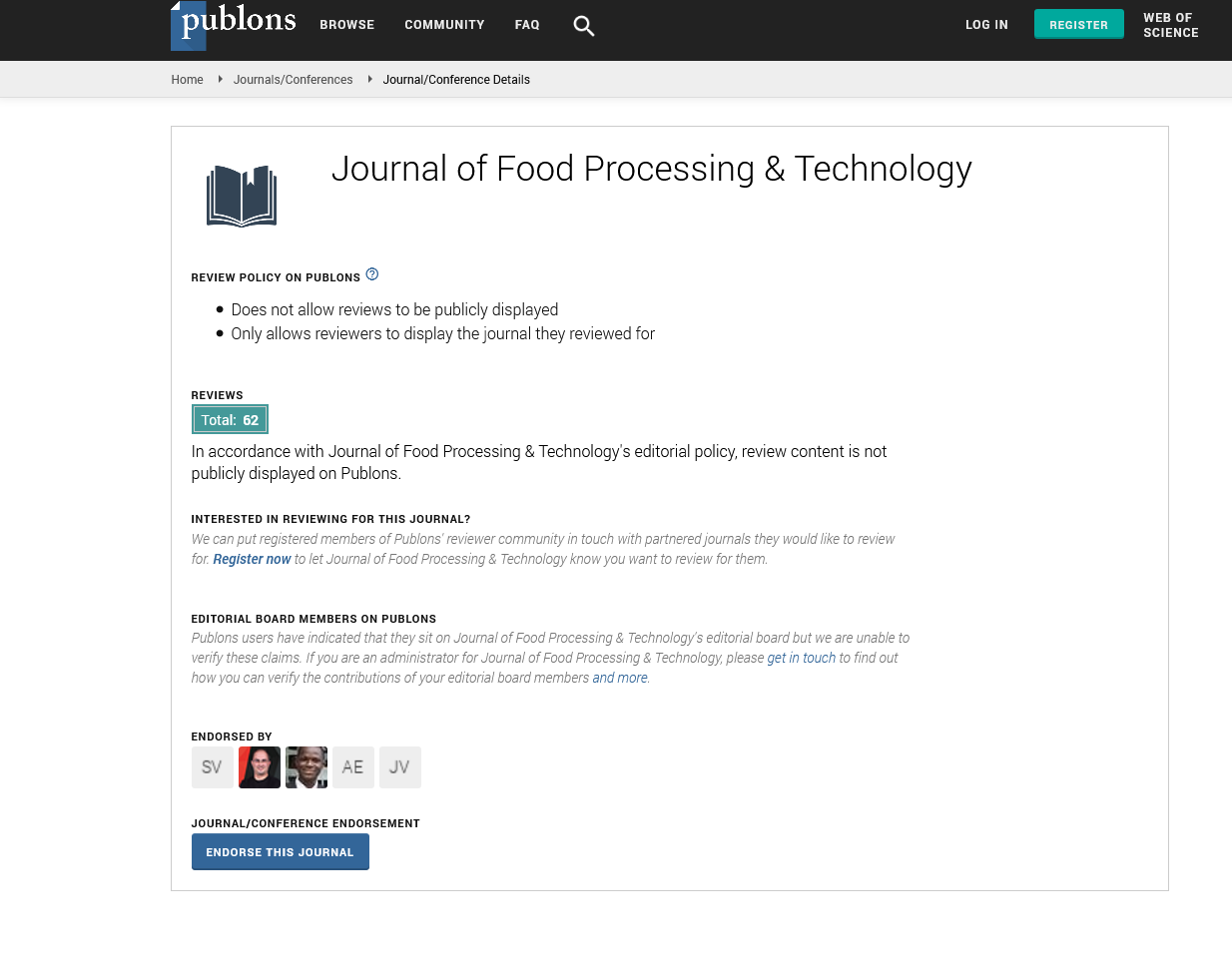Indexed In
- Genamics JournalSeek
- Academic Keys
- JournalTOCs
- China National Knowledge Infrastructure (CNKI)
- Access to Global Online Research in Agriculture (AGORA)
- Centre for Agriculture and Biosciences International (CABI)
- RefSeek
- Directory of Research Journal Indexing (DRJI)
- Hamdard University
- EBSCO A-Z
- OCLC- WorldCat
- Scholarsteer
- SWB online catalog
- Publons
- Euro Pub
- Google Scholar
Useful Links
Share This Page
Journal Flyer

Open Access Journals
- Agri and Aquaculture
- Biochemistry
- Bioinformatics & Systems Biology
- Business & Management
- Chemistry
- Clinical Sciences
- Engineering
- Food & Nutrition
- General Science
- Genetics & Molecular Biology
- Immunology & Microbiology
- Medical Sciences
- Neuroscience & Psychology
- Nursing & Health Care
- Pharmaceutical Sciences
Commentary - (2025) Volume 16, Issue 1
Encapsulation Technologies for Bioactive Compound Delivery in Foods
Felix Schneider*Received: 27-Jan-2025, Manuscript No. JFPT-25-29162; Editor assigned: 29-Jan-2025, Pre QC No. JFPT-25-29162; Reviewed: 12-Feb-2025, QC No. JFPT-25-29162; Revised: 18-Feb-2025, Manuscript No. JFPT-25-29162; Published: 26-Feb-2025, DOI: 10.35248/2157-7110.25.16.1139
Description
Encapsulation technologies have become an essential tool in the development of functional foods, offering a means to deliver bioactive compounds more efficiently and effectively. These compounds, including vitamins, minerals, antioxidants, probiotics, polyphenols, and essential fatty acids, provide health benefits beyond basic nutrition. However, their direct incorporation into food products often presents considerable challenges, primarily due to their sensitivity to environmental conditions such as heat, light, oxygen, pH, and moisture. Moreover, many bioactives suffer from poor solubility, unpleasant taste or odor, low stability, and reduced bioavailability during digestion. Encapsulation technologies address these issues by entrapping the bioactive compounds within a protective coating or matrix, preserving their functional properties, enhancing their shelf life, masking undesirable sensory characteristics, and enabling their controlled release at targeted sites in the gastrointestinal tract. Encapsulation can be achieved through a variety of methods that form either microcapsules or nanocapsules, depending on the particle size and the intended application. The process typically involves the use of natural or synthetic polymers that act as wall or carrier materials. These include polysaccharides like starch, maltodextrin, pectin, alginate, and chitosan; proteins such as gelatin, whey protein, soy protein, and casein; and lipids such as waxes and phospholipids. Each material offers unique advantages, and the choice depends on the nature of the bioactive, the processing conditions, and the final product requirements. For instance, polysaccharides provide excellent film forming properties and are Generally Recognized As Safe (GRAS), while proteins offer strong binding affinity and emulsifying capabilities. Lipid based carriers are especially useful for hydrophobic bioactives, forming structures such as liposomes or solid lipid nanoparticles that improve solubility and protect the encapsulated contents from oxidation.
Among the widely used encapsulation techniques in the food industry, spray drying is considered the most popular due to its cost effectiveness and scalability. In this process, an emulsion or solution containing the bioactive and wall material is atomized into a heated chamber, where the solvent evaporates rapidly, resulting in the formation of dry powder particles. Spray drying is particularly suitable for encapsulating heat stable bioactives such as flavors, colors, and certain vitamins. However, for heat sensitive compounds, other techniques such as freeze drying, coacervation, fluidized bed coating, liposome entrapment, nanoemulsification, and electrospinning are more appropriate. These methods offer different levels of protection, release mechanisms, and particle characteristics, allowing food scientists to tailor the encapsulation approach according to the bioactive’s nature and intended use. One of the most promising techniques is liposomal encapsulation, which uses phospholipid bilayers to encapsulate both hydrophilic and lipophilic bioactives. Liposomes can enhance the absorption of bioactive compounds in the gastrointestinal tract and are highly compatible with biological membranes, making them suitable for nutraceutical and pharmaceutical applications. Similarly, nanoencapsulation techniques, which involve encapsulating compounds at the nanoscale, have gained attention due to their ability to significantly enhance the solubility and bioavailability of poorly water soluble bioactives. Nanoemulsions, nanogels, and polymeric nanoparticles provide large surface area to volume ratios, enabling more efficient interaction with digestive fluids and better cellular uptake.
Encapsulation also plays a critical role in the protection and delivery of probiotics. These beneficial microorganisms are highly sensitive to heat, moisture, and acidic environments, which can reduce their viability during food processing, storage, and gastrointestinal transit. Microencapsulation of probiotics in hydrogels or polymeric shells helps to maintain their viability and ensure that an adequate number of live cells reach the colon to confer health benefits. Techniques such as alginate chitosan encapsulation or gelatin based beads are commonly used for this purpose and are effective in enhancing the functional efficacy of probiotic enriched foods. Another important aspect of encapsulation is its potential to control the release of bioactive compounds in the digestive system. Controlled release systems can protect the compound in the stomach’s acidic environment and allow it to be released in the more neutral pH of the small intestine, where absorption occurs. This targeted delivery increases the functional impact of the bioactive while reducing the required dosage and potential side effects. pH sensitive coatings, time dependent release systems, and enzyme triggered release mechanisms are some of the strategies being employed to achieve controlled and site specific release of encapsulated ingredients.
The integration of encapsulated bioactives into food products must also consider factors such as compatibility with the food matrix, sensory attributes, and consumer acceptance. Encapsulation can mask undesirable tastes, such as the bitterness of certain polyphenols or the fishy odor of omega-3 fatty acids, thereby improving the sensory quality of the final product. However, it is important that the encapsulated form does not alter the texture, appearance, or mouthfeel of the food in a negative way. Additionally, the regulatory status of the encapsulating materials and the labeling requirements for functional foods must be carefully addressed to ensure consumer trust and compliance with food safety standards. Encapsulation technologies are not without challenges. The cost of materials and processing equipment, the complexity of production, and the need for specialized knowledge can be barriers to adoption, particularly for small and medium sized enterprises. Moreover, ensuring uniform particle size, stability during storage, and reproducibility in large scale production remains a technical hurdle. Nevertheless, ongoing research and technological advancements continue to improve encapsulation efficiency, lower costs, and open up new possibilities for innovative product development.
Citation: Schneider F (2025). Encapsulation Technologies for Bioactive Compound Delivery in Foods. J Food Process Technol.16: 1139.
Copyright: © 2025 Schneider F. This is an open access article distributed under the terms of the Creative Commons Attribution License, which permits unrestricted use, distribution, and reproduction in any medium, provided the original author and source are credited.


